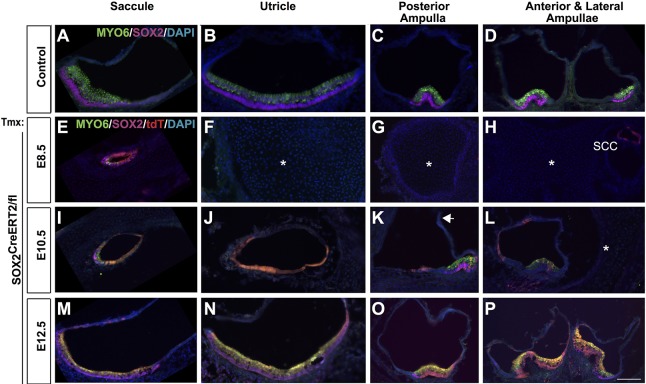Fig. 7.
Early SOX2 deletion results in both nonsensory and sensory loss in the vestibule, whereas later deletion has few effects on the vestibular regions. (A-D) Sections through the vestibular organs of an E18.5 control. Sensory regions are marked by MYO6 (hair cells) and SOX2 (supporting cells). (E-H) In the absence of SOX2 at E8.5, the vestibule largely failed to form, with the exception of a very small saccule (E), which contained a few MYO6- and SOX2-positive cells. Asterisks indicate missing vestibular sensory organs (F-H). (I-L) The vestibule from E10.5 deletion resulted in a significantly underdeveloped saccule (J), a smaller utricle devoid of sensory formation (K), a posterior crista lacking an ampulla and fused to the common crus (arrow), and a missing anterior crista and ampulla (asterisk) (L). (M-P) Deletion of SOX2 at E12.5 did not produce an overt phenotype in any of the vestibular organs. SCC, semicircular canal. Scale bar: 100 µm (in P, representing A-P).

